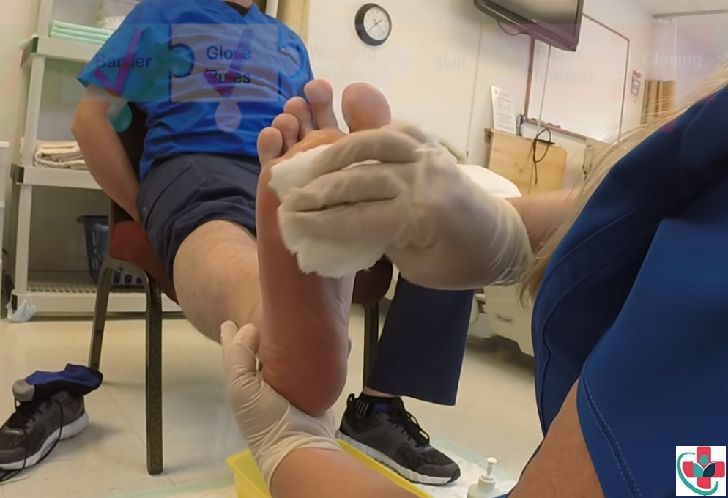Feet are more exposed to dirt and dampness than any other part of the body. They, therefore, need special care.
Why is foot care important?
Over time, diabetes can cause you to lose feeling in your feet. When you lose feeling in your feet, you may not feel a pebble inside your sock or a blister on your foot, which can lead to cuts and sores. Diabetes also can lower the amount of blood flow in your feet. Numbness and less blood flow in the feet can lead to foot problems.
Foot care is very important for all people with diabetes, but even more so if you have:
- pain or loss of feeling in your feet (numbness, tingling)
- changes in the shape of your feet or toes
- sores, cuts, or ulcers on your feet that do not heal
Work with your health care team to make a diabetes plan that fits your lifestyle and includes foot care. The team may include your doctor, a diabetes educator, a nurse, a foot doctor (podiatrist) and other specialists who can help you manage your diabetes.
Tips on foot care
- Wash them thoroughly in warm soapy water
- Rinse them well to remove soap and dirt.
- Dry them well, especially between the toes. Dampness between the toes causes athlete’s foot, a fungal infection. Talcum powder can be applied between the toes to avoid athlete’s foot. A disinfectant in the washing water and application of Gentian Violet solution (GV) can also be used against athlete’s foot.
- Cut your toenails regularly because of long toe-nails harbor dirt. They also damage socks and stockings.
- Ensure that shoes are well-fitting. Ill-fitting shoes press the feet and distort their shape. They also cause the growth of corns. Corns form where tight shoes push against the skin. Tight shoes also cause bunions. Bunions are painful and ugly swellings that form on toe joints, especially on the big toe.
- If socks are worn, they should be absorbent to keep the feet dry and healthy.
- Shoes should have moderately and comfortable heels.
- Air the feet regularly
- If your skin is dry, apply moisturising cream all over the foot, except for between the toes. Gently remove hard skin and calluses with a pumice stone or foot file – don't overdo it though or skin will grow back harder than ever.Occasionally, use a pumice stone to remove dead skin and stubborn stains from the sole.
- Change socks and stockings daily to keep unpleasant odor.
- Shop for shoes in the afternoon. Your feet swell as the day goes on and if shoes fit in the afternoon when your feet are at their largest, you can be assured they will always be comfortable.
- You can't wear flip-flops all the time. They don't provide support for your feet and can give you arch and heel pain if you wear them too much.
